I waited over 2 hours to try $11 Michelin-starred ramen. It was one of the best dishes I've had in Tokyo, but I'm never going back.
David McElhinney

- I ate at Chukasoba Ginza Hachigou, one of the three Michelin-starred ramen restaurants in Tokyo.
- I waited two-and-a-half hours for an $11 bowl of ramen, which fused Eastern and Western flavors.
I dined at Chukasoba Ginza Hachigou, one of Tokyo's three Michelin-star ramen restaurants.
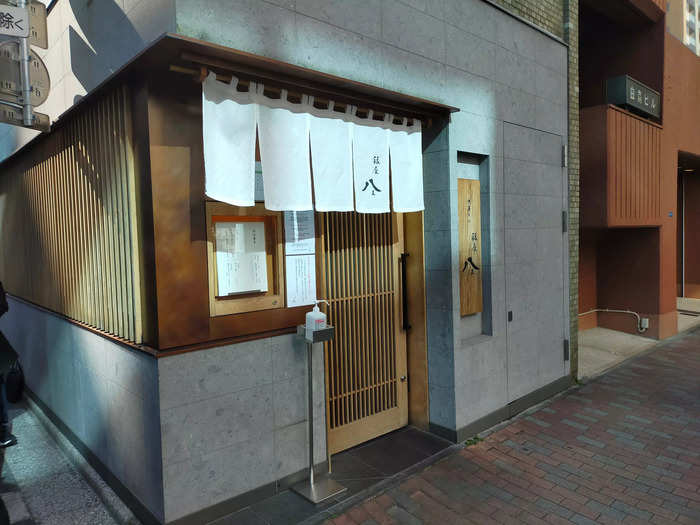
If you want to eat at Chukasoba Ginza Hachigou, you have to be willing to wait for good food.
One of only three ramen restaurants in Tokyo to earn a Michelin star in 2022 (it previously had a Bib Gourmand), the restaurant — run by Yasufumi Matsumura, the chef and owner — has become one of the city's most popular lunch spots.
I headed to Tokyo's Ginza neighborhood on a frigid February morning to try the ramen, which is influenced by Matsumura's background in French cuisine and fine dining. Though people used to be able to make reservations, that wasn't the case when I went.
The shop only serves a certain amount of bowls every day and closes around 3 p.m., so I figured it would be good to get there early. I arrived at 11:15 a.m. on a Thursday, just 15 minutes after opening time.
Here's what it was like.
The line to enter was so long that I considered coming back another day.
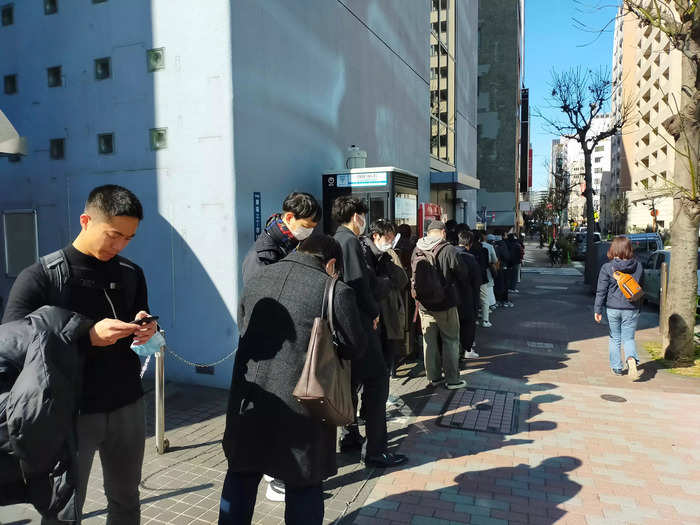
A sense of foreboding grew inside of me as I approached the restaurant and looked up to see a queue of about 30 to 40 individuals hugging the side of the street. It led directly to Chukasoba Ginza Hachigou, which I spotted in the distance.
Long lines like this one aren't a rarity in Tokyo.
Many locals are more than willing to wait hours to try a new bubble-tea cafe in the city's trendy Shimokitazawa district or order tonkatsu (breaded pork) from a hole-in-the-wall shop that's trending on social media. I've seen similarly long lines during Golden Week, a series of public holidays in the spring.
Patience isn't one of my virtues, so I avoid queuing at all costs. But I'd committed to trying this ramen shop, so I begrudgingly joined the back of the line.
The restaurant has rules prohibiting customers from sitting, smoking, or jumping the line.

I stood in the queue and stared vacantly into the distance, waiting for time to pass.
A staff member from the shop intermittently checked on us, ensuring everybody was standing in a single-file formation.
They also made sure nobody was sitting down, smoking, jumping the line, or creating any other disturbances. These rules were even hung by the shop door in both Japanese and English.
After 30 minutes or so of standing, I inquired about the wait time. "Between two and three hours," the staff member replied.
His estimation was spot on. I neared the end of the first part of the line at the two-hour mark. Then, I crossed the street to queue some more.
Before joining the second part of the line, I ordered my $11 ramen using a vending machine.
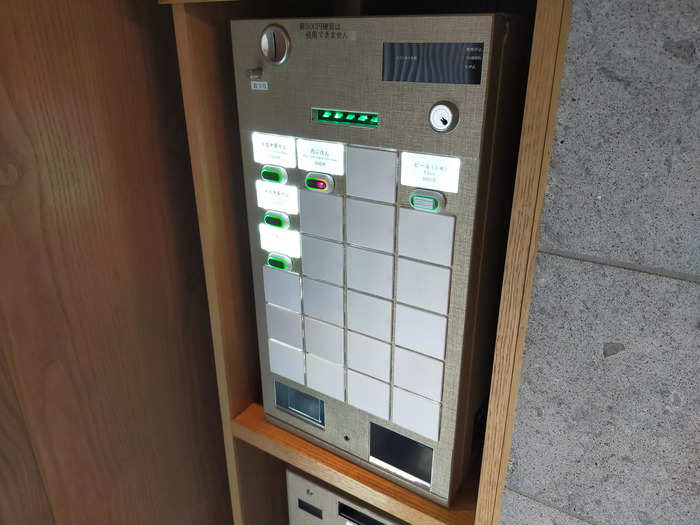
Right before I got to the second portion of the line, a staff member sent me inside to purchase a ticket for my noodles. If customers didn't speak Japanese, the employees translated the instructions on their phones.
A vending machine dispensed the tickets, a system that's customary in many ramen restaurants across Japan.
The three options — Chuka Soba, Ajitama Chuka Soba, and Chashu Chuka Soba — are all made with the shop's signature broth: a fusion of Eastern and Western flavors including kombu (seaweed), dried shiitake mushrooms, dried tomatoes, scallops, uncured ham, free-range chicken, and duck.
The difference lies in the toppings.
The Chuka Soba is the most standard option with no extra toppings, the Ajitama Chuka Soba comes with a soft-boiled egg, and the Chashu Chuka Soba, the dish I ordered for 1,500 yen, about $11, is topped with sliced pork and a soft-boiled egg. Beer and small bowls of rice with pork are also available.
After ordering, I passed my ticket to the staff member so they knew my number in the queuing order. Then, they shuffled me back outside to reclaim my place in line. Losing my spot wasn't something I worried about, as queuing etiquette is typically very respectful in Japan.
About two-and-a-half hours after I arrived, I finally reached the front of the line.
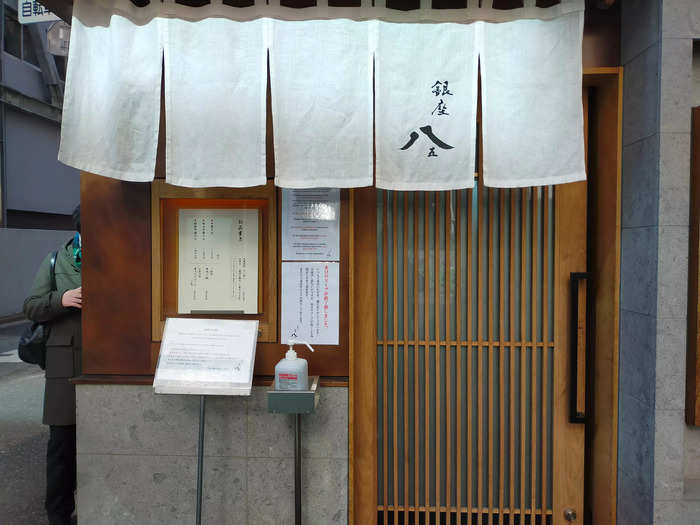
I didn't eat breakfast on the day of my visit, mistakenly thinking the wait time would be short this early in the morning. By the time I neared the front of the line, my conversation with the guy beside me had moved from small talk to whines about our hunger.
I hoped that I'd be able to show enough restraint when the noodles were in front of me to enjoy them rather than inhale them.
But I was starving by the time I reached the entrance to the fairly nondescript establishment, which is on the ground floor of a multistory building.
It has latticed windows fixed within a stone facade. Its half-length curtains, called noren, are emblazoned with the restaurant's name in kanji, a Japanese system of writing that uses Chinese characters.
The shop was very small and a little fancier than most of the ramen joints I've visited in Tokyo.
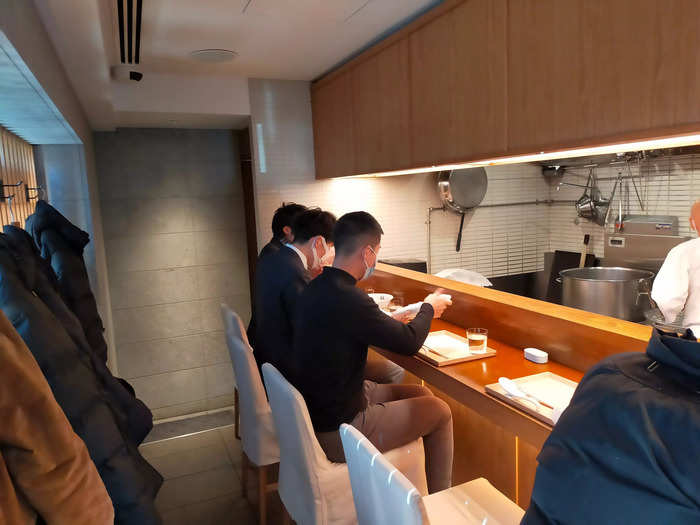
As the door shut behind me, silence seemed to fill the room. The only noises I heard were the odd slurp of noodles, the clink of chopsticks on porcelain, and the sound of the chef pouring broth into bowls.
The ramen restaurants I've visited in Tokyo tend to have a little bit more atmosphere, with steam billowing from an open kitchen, meat sizzling on a hot plate, and chefs welcoming customers with gusto.
Chukasoba Ginza Hachigou is also tiny. It only has six seats, which explains the long wait time.
The restaurant's size is also reflected in its name. Hachigou means "eight-five," and the shop is 8 tsubo by 5 tsubo. Tsubo is a Japanese unit of area equal to about 35.58 square feet.
It's no surprise the ramen tasted good, given Mastumura's credentials.
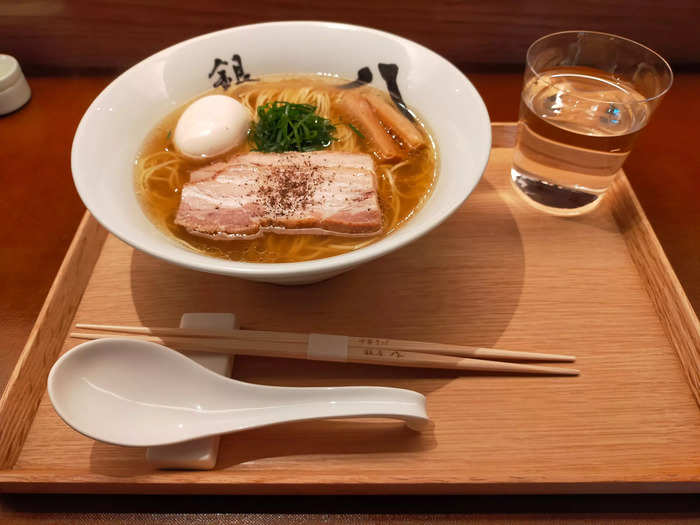
Chukasoba Ginza Hachigou is the third ramen shop Mastumura has opened after leaving an acclaimed career in fine dining. The influence of his previous work at upscale establishments wasn't only evident in the restaurant's setting and presentation, but also in the food.
The Chashu Chuka Soba's broth was thinner than the hefty tonkotsu (pork bone) or miso-butter soups I tend to favor. Its umami-rich flavor exploded across my palate but still managed to remain delicate.
Matsumura also eschews the use of tare — a combination of soy sauce, mirin, and sugar — in his broth, an element some purists argue is a prerequisite for a good bowl of ramen.
However, this broth begs to differ.
The toppings on the Chashu Chuka Soba tasted sublime and were cooked to perfection.
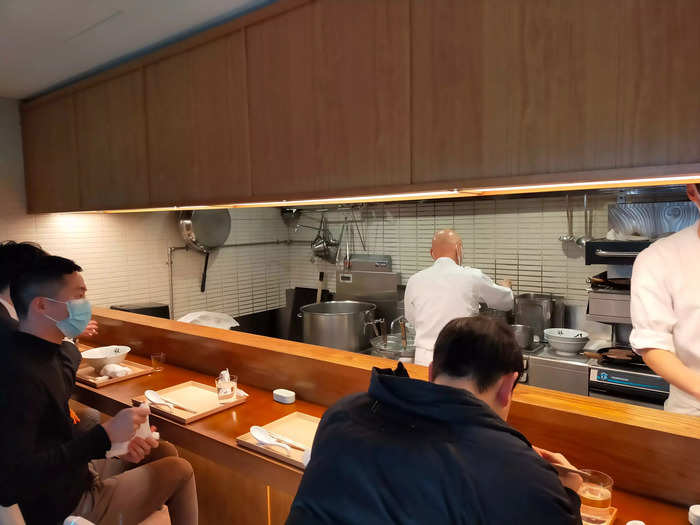
The strips of chashu (braised pork belly) were so tender that I could barely lift them with my chopsticks without having them fall apart.
The cracked pepper on top was also a nice touch. I haven't seen it in many traditional Japanese ramen dishes, but it complimented the broth's natural saltiness.
When I bit into the soft-boiled egg, it had a fluffy texture and a rich, yolky flavor that spread to every corner of my mouth.
Menma, a condiment made of fermented bamboo shoots, and a dollop of thinly sliced green onions completed the combination.
The shop served some of the best ramen I've ever eaten, but after waiting in line for so long, there's no chance I'm going back.
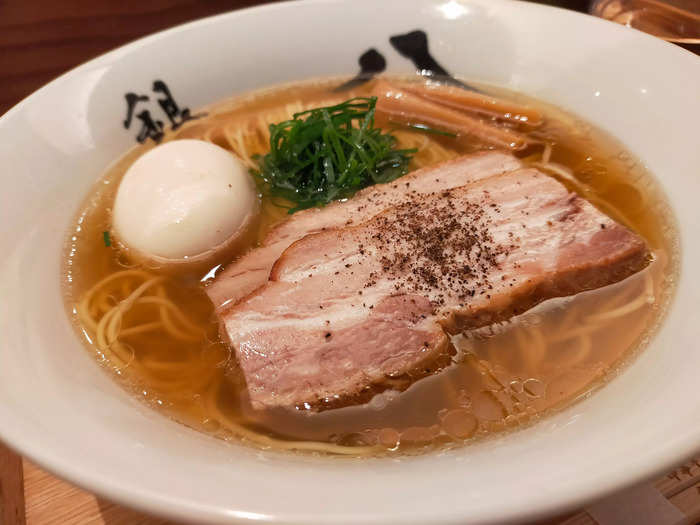
As someone who's lived in Japan for a while, I've eaten a lot of ramen. Here's the thing: It's almost always good. Really good.
So, in my opinion, it's not worth waiting two to three hours for a bowl unless your primary goal is to taste Michelin-starred ramen. Personally, I was disgruntled by the line.
I wish I could've bought my ticket, waited in a place where I could sit and relax instead of being on my feet for hours, and returned closer to my seating time.
The lengthy queue didn't seem to dissuade people either. I saw some try to join the back of the line before midday, and staff members had to tell them they were already too late.
Moreover, the atmosphere inside the restaurant felt a bit devoid of life, and because it lacked the charm I was looking for, I ate my meal as quickly as possible.
Tokyo has 18 ramen shops currently holding a Michelin Bib Gourmand, an award that goes to restaurants with the best value for money. Countless others may not have official awards or distinctions, but they serve up seriously good bowls of noodles.
My recommendation is to try one of those first before waiting in line at Chukasoba Ginza Hachigou.
Popular Right Now
Popular Keywords
Advertisement